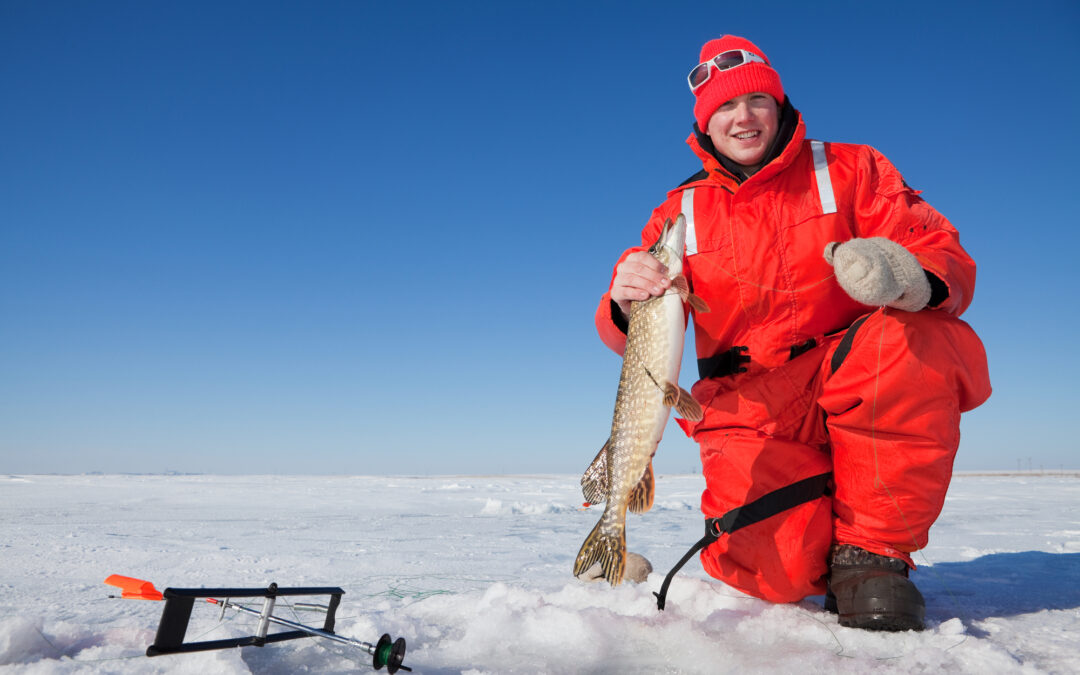Why Go Ice Fishing in the First Place? How to Stay Safe and Where to Find the Fish
Let’s face it…even most die-hard denizens of the great white north can scratch their head when you suggest going ice fishing. Why would you want to sit on top of a block of ice for hours, with only the potential reward of pulling a fish out of nearly freezing waters? If you’re an avid angler and you haven’t tried it, you’d be surprised. The fishing’s almost always good, the company’s usually great and the most experienced ice fishers never even think about being cold.
Why Fish in the Winter?
Have you ever sat in a boat or on a dock for hours, without ever getting a bite? That almost never happens when you’re ice fishing. The fish don’t stop eating, just because it’s cold. Furthermore, the things they typically dine on, such as insects or crayfish, are typically in short supply when the lakes are covered with ice. That means they’ll be more likely to chase a lure. Most state laws allow you to set multiple traps per person—Maine allows up to five—so you may not spend a lot of time just sitting. Of course, when you’re actively pulling in fish, you’ll likely be perspiring, not shivering.
You’ll also typically find that ice fishing is as much a social event as anything. While a few fishermen like to do it alone, most enjoy larger groups. Instead of an isolated shanty, you’ll often find an “ice camp,” with multiple structures. Some of the essentials of the best ice camps include gas or charcoal grills, coolers, folding chairs, beer, portable radios and televisions, and lots of snacks.
The First Ice Fishing of the Year—Usually the Best, But Also the Most Dangerous
When you get out on the ice for the first time, you’ll likely find hungry and unassuming fish. You may also find thin ice, as it takes time for the water below the surface to freeze. Before you spend any time on the ice, you’ll want to check the thickness. You’ll want an augur to drill through the ice, as well as a tape measure to gauge the thickness. As a rule of thumb, you never want to set up camp on ice that’s less than four solid inches thick and you should probably add an inch of thickness for every additional person in your camp.
The Best Spots for Ice Fishing
As a general rule, the fish live in the same places in the winter that they occupy the rest of the year. Knowing the lake, its depth, and where the weed beds and rock piles are will help you know the best place to set up your camp.


